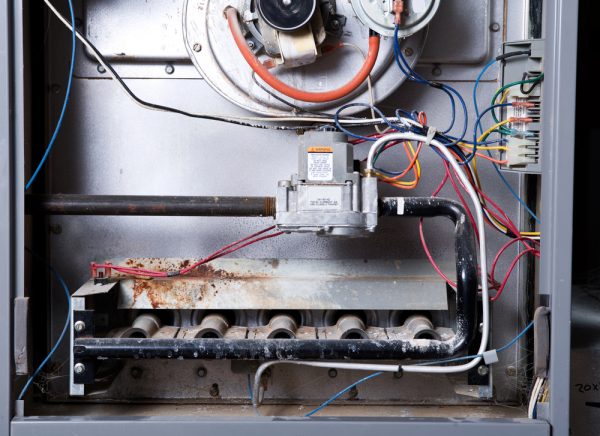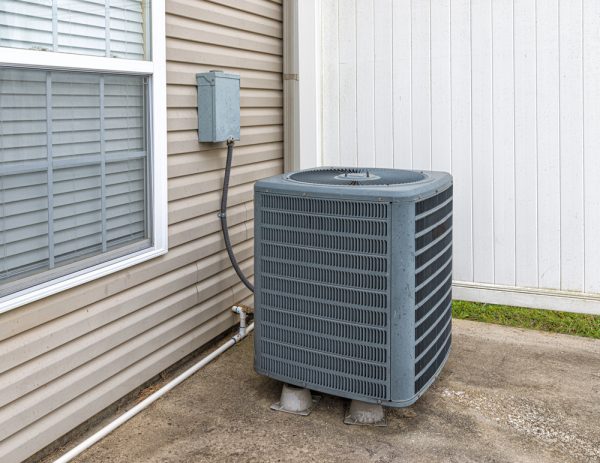According to the U.S. Department of Energy, “each year in the U.S., three million heating and cooling systems are replaced and $14 billion is spent on HVAC services or repairs.”
Managing single-family rental (SFR) properties comes with unique challenges, particularly when it comes to balancing tenant satisfaction with property maintenance. One area that’s frequently overlooked but crucial for long-term cost efficiency is the maintenance of HVAC systems.
In single-family rentals, HVAC issues can be a leading cause of tenant dissatisfaction and result in costly, unexpected repairs for property managers. Implementing an HVAC preventative maintenance program can drastically reduce these risks, saving both time and money. In this article, we’ll explore the significant benefits of regular HVAC maintenance for single-family rental properties and provide a few statistics that highlight the impact.
The High Cost of Reactive Maintenance in SFRs
Unlike multi-family buildings where systems can often be serviced in bulk, single-family homes have individual HVAC units. This makes the maintenance needs more fragmented and potentially more expensive on a per-unit basis.
When property managers or owners take a reactive approach to maintenance—only addressing HVAC problems when something breaks—they risk higher repair costs, extended tenant dissatisfaction, and even premature system replacements.

Our data shows that the average cost to repair an HVAC system ranges between $225 and $1,400 per incident, while a complete system replacement in a single-family rental can cost anywhere from $2,300 to $7,000. For owners of multiple single-family rental properties, these unexpected costs can add up quickly. In contrast, a tune-up with Lula costs between $99-$129 per unit bi-annually, a relatively small investment when compared to the potential cost of major repairs or replacements.
Key Benefits of Preventative HVAC Maintenance for Single-Family Rentals
Avoiding Costly Emergency Repairs
One of the most direct benefits of preventative HVAC maintenance is the reduction in emergency repair costs. The HVAC systems in single-family homes are often used heavily, especially in extreme weather conditions. If a system breaks down during a cold winter or hot summer, the costs for emergency repairs can be steep. In fact, HomeAdvisor found that emergency HVAC repair calls can be 50% to 100% more expensive than standard service calls due to overtime labor charges and parts scarcity.
In single-family rentals, these repairs often occur at inconvenient times for both the tenant and the property manager, causing further disruptions. Every property manager loves a Friday afternoon, “My AC is out” call?
Regular maintenance—such as inspecting the system for worn-out parts, cleaning coils, and changing filters—helps identify and fix small issues before they become large, costly problems. The U.S. Department of Energy estimates that preventive maintenance can reduce HVAC breakdowns by up to 95%, greatly diminishing the need for emergency repairs.
According to our 2024 HVAC maintenance data, 26% of preventative maintenance calls prevented an emergency HVAC call. That means 26% of preventative maintenance visits resulted in a diagnosis that would have shut down the system at some point. That doesn’t mean the other 74% of visits are useless, a well-maintained system has an increased lifespan. Seasonal HVAC maintenance is a silent savior that works beneath the surface. Let’s hop into a few of the other benefits.
Lowering Utility Bills
For single-family rental properties where the landlord covers utility costs, energy efficiency is paramount. Even in cases where tenants pay their own utility bills, high energy costs due to inefficient HVAC systems can lead to dissatisfaction and tenant turnover. Preventative maintenance ensures that the HVAC system is running efficiently, which can significantly reduce energy consumption.
However, by regularly servicing HVAC systems—such as cleaning filters, lubricating moving parts, and adjusting system controls—energy consumption can be reduced by 15% to 20%. This translates into lower utility bills for the property owner or tenant and less strain on the system.
Extending HVAC System Lifespan
HVAC systems are among the most expensive components of a single-family rental property. With proper care, most HVAC systems have a lifespan of 15 to 20 years, but neglecting regular maintenance can shorten that to as little as 10 years (which is right when the standard warranty period ends). Replacing an HVAC system prematurely can significantly impact a rental property owner’s finances and long-term ROI.

On average, replacing an HVAC unit for a single-family home costs between $5,000 and $7,000, not including the potential cost of tenant turnover if the system breaks down unexpectedly. That number can be even higher in larger or luxury homes with multiple systems.
In contrast, a preventative maintenance plan, which can cost as little as $200 annually, extends the life of the system by ensuring it operates efficiently and avoids unnecessary strain. By performing small tasks like checking refrigerant levels and ensuring that the system’s components are functioning optimally, property managers can delay the need for costly replacements.
Improving Tenant Retention and Satisfaction
Tenant retention is one of the most critical factors in maximizing profitability for single-family rental property owners. High tenant turnover can be expensive, not only because of the vacancy but also because of the costs associated with finding new tenants, preparing the property for move-in, and potential lost rental income.
HVAC issues are one of the most common complaints from tenants in single-family homes. According to a survey by the National Multifamily Housing Council, 93% of tenants reported that in-unit HVAC is one of the most sought-after features. By maintaining a reliable and efficient HVAC system, property managers can improve tenant satisfaction, which leads to higher lease renewal rates.
A survey by AppFolio asked tenants if they were satisfied with their property manager’s maintenance response. Of those who said they were unsatisfied, 63% of them said they planned on moving in the next 12 month. As opposed to those who marked they were satisfied, where only 38% of tenants plan on moving in the next 12 months. This is a big indicator that maintenace is a driver for tenant retention.
This means that by simply maintaining the HVAC system, property managers can reduce vacancy and turnover rates, which can save an average of $1,750 per unit, including marketing, cleaning, and lost rent during the vacancy period.
Minimizing Disruptions and Downtime
One of the less obvious benefits of preventative maintenance is minimizing downtime in rental properties. A sudden HVAC failure not only inconveniences tenants but also requires property managers to act quickly to get the system repaired or replaced. This often leads to disruptions that can affect tenant satisfaction, and in some cases, may require tenants to temporarily relocate or stay in a hotel, causing additional costs.

With a preventative maintenance schedule, property managers can avoid those time killers. Tasks like filter replacements and system checks can be scheduled during times that are convenient for tenants, minimizing the disruption. According to another energy study, planned maintenance can reduce HVAC system costs by as much as 25-30%, providing peace of mind for property managers, owners, and tenants.
Real-World Example: Savings for Single-Family Rental Property Managers
Let’s take an example of a property manager overseeing 20 single-family rental properties, each with an HVAC system that consumes around $1,000 annually in energy costs. Without preventative maintenance, these systems may become 10% less efficient over time, resulting in an additional $2,000 per year in energy expenses across all properties. Even if tenants are responsible for utility costs, inflated energy bills might cause them to reconsider when renewal comes due.
If a major HVAC breakdown occurs in just 10% of these homes, the repair costs alone could amount to $3,000 to $6,000 annually.
On the other hand, by investing in a preventative maintenance program — at a cost of about $250 per property annually — the property manager can reduce energy inefficiency, extend the system’s lifespan, and lower the risk of emergency repairs. In this case, the initial $5,000 investment in preventative maintenance could save the property owner a significant amount of money in repair and energy costs, while also increasing tenant satisfaction and reducing turnover.
HVAC Preventative Maintenance Checklist
When you’re scheduling a contractor to go out and service your property, it’s important to determine the scope of the service beforehand. Each HVAC technician might have a different idea of what a preventative maintenance service includes. Here is the checklist we use when we send one of our licensed HVAC Pros to a home for a seasonal tune-up:
Fall Furnace Checklist
-
- Check air filter: Hopefully your tenants are replacing this regularly, but if not, this is a no-brainer. Have them change the air filter and note what size it is if you don’t already have that documented.
- Inspect thermostat: If the batteries need to be changed, please change them. If the tenant is home, you can show them how this is done in case they ever need to do it.

- Test combustion
- Inspect flues for obstruction
- Check duct work for leaks and breaks
- Clean flame sensor if necessary
- Check blower motor for dirt
- Check ignitor
- Tighten electrical connections if needed
- Run furnace cycle (this also inspects safety controls such as high limit limit switches)
- Take pictures of the temperature rise
- Take pictures make/model sticker: This is mainly for your records. It’s good to have the make, model, and size of your equipment on hand. On top of that, we include a detailed health report for your unit on every tune-up.
Spring HVAC Checklist
- Check air filter: Hopefully your tenants are replacing this regularly, but if not, this is a no-brainer. Have them change the air filter and note what size it is if you don’t already have that documented.
- Inspect thermostat: If the batteries need to be changed, please change them. If the tenant is home, you can show them how this is done in case they ever need to do it.
- Inspect AC disconnect
- Clean and tighten connections
- Test capacitors
- Check contractors
- Test safety & limit switches
- Drain line clean out (if applicable)
- Check refrigerant levels
- Check system pressures
- Identify any other potential issues for repair
- Take pictures make/model sticker: This is mainly for your records. It’s good to have the make, model, and size of your equipment on hand. On top of that, we include a detailed health report for your unit on every tune-up.
Monthly HVAC Filter Replacements
Enough about seasonal tune-ups, regularly changing HVAC filters plays a huge role in a system’s health. This is a task that tenants are completely capable of doing themselves (and sometimes required).
There are solutions today that will put all of your properties on a monthly schedule that delivers the correctly sized filter right to your tenant’s door.
The biggest concern property owners have with monthly filter replacements is reduced cash flow, but what if there was a solution for that?
Second Nature has centered their entire business around filters in a “Resident Benefits Package”, but designing it with the property manager/owner in mind. They commonly refer to this concept as the Triple Win Advantage.
Tenants pay a small monthly fee for a bevy of benefits, including filters and insurance.
Owners get savings and reputation associated with happy tenants and maintained HVAC systems.
Property managers reduce the number of emergencies they experience and even earn additional revenue from package sales.
It’s truly, as they say, a Triple Win.
Conclusion: A Proactive Approach Pays Off
For property managers and owners of single-family rental properties, HVAC systems represent a critical area where proactive maintenance can yield substantial financial and operational benefits. The statistics make a clear case: preventative maintenance reduces repair costs, lowers energy consumption, and extends system lifespan—all while improving tenant satisfaction and retention.
In the competitive rental market, where tenants expect reliable climate control and comfortable living conditions, regular HVAC maintenance is not just a cost—it’s an investment in the property’s long-term success. By adopting a preventative approach, property managers can save thousands of dollars annually while minimizing disruptions and keeping tenants happy.
Investing in preventative HVAC maintenance today can prevent major headaches tomorrow, ensuring that single-family rental properties remain profitable and sustainable for the long haul.
If you want more information about setting up a preventative HVAC maintenance program for your properties, let’s set up a call to discuss how we can execute it together.
Anything found written in this article was written solely for informational purposes. We advise that you receive professional advice if you plan to move forward with any of the information found. You agree that neither Lula or the author are liable for any damages that arise from the use of the information found within this article
